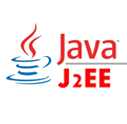
Java is a language and Java EE is a platform which implements java language. Java EE standard for Java EE Enterprise Edition. Core Java and advanced java are the standard editions of java whereas Java EE is the enterprise edition which is a combination of both core & advanced java. It is used for creating enterprise web applications. Java EE makes use of Servlets and JSPs to provide enterprise applications like web pages and portals.
Deccansoft offers Java Java EE training course with in-depth hands on exposure to the Java platform. we cover specialized modules with different aspects of real world work environment and ensure that students are prepared for actual application development required in the industry. So it helps you to develop Java EE development skills. Our course not only helps one in understanding language syntax but also in enabling you to practically implement the technology, making you a successful software developer.
Java EE training at Deccansoft gives you a true learning experience. Detailed explanation of every topic, practical demonstration, walkthroughs are inbuilt features of training. Lab is open throughout the working hours, with the faculty readily available to assist you. Excellent course material prepared by the our expert team is given to students which aids you to independently practice the subject.
The objectives of this course are to: